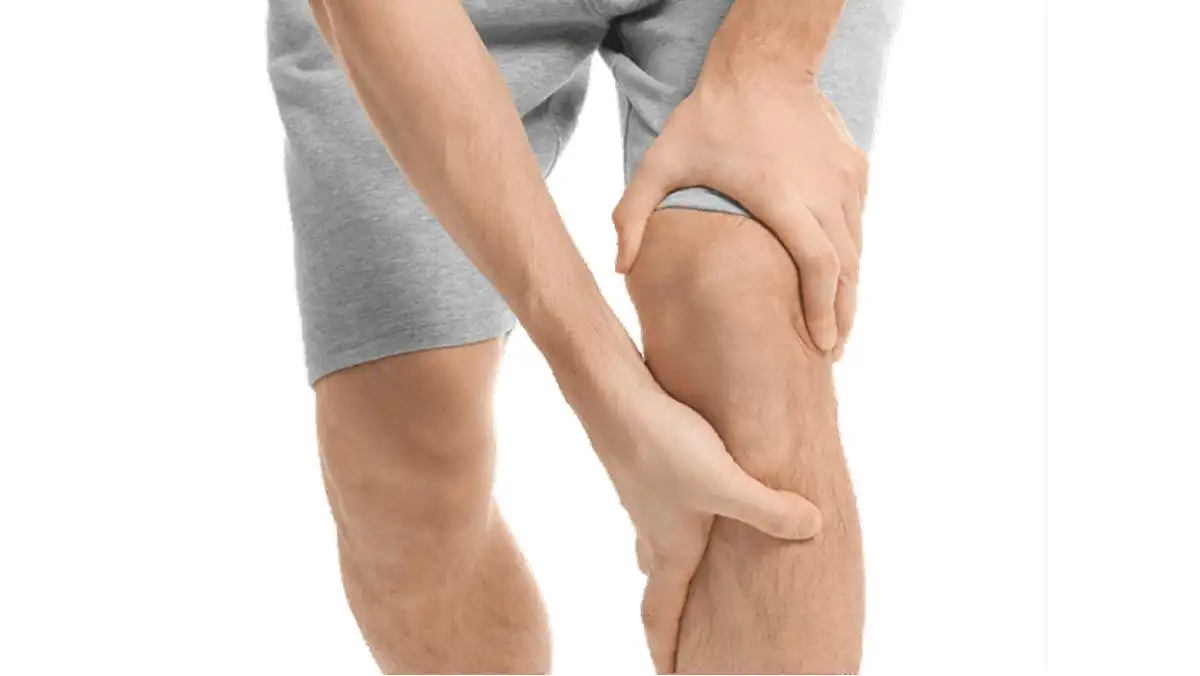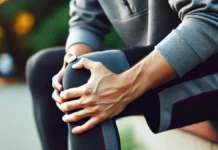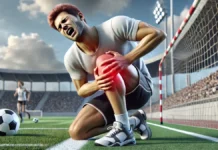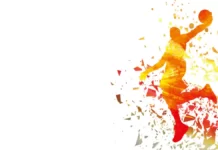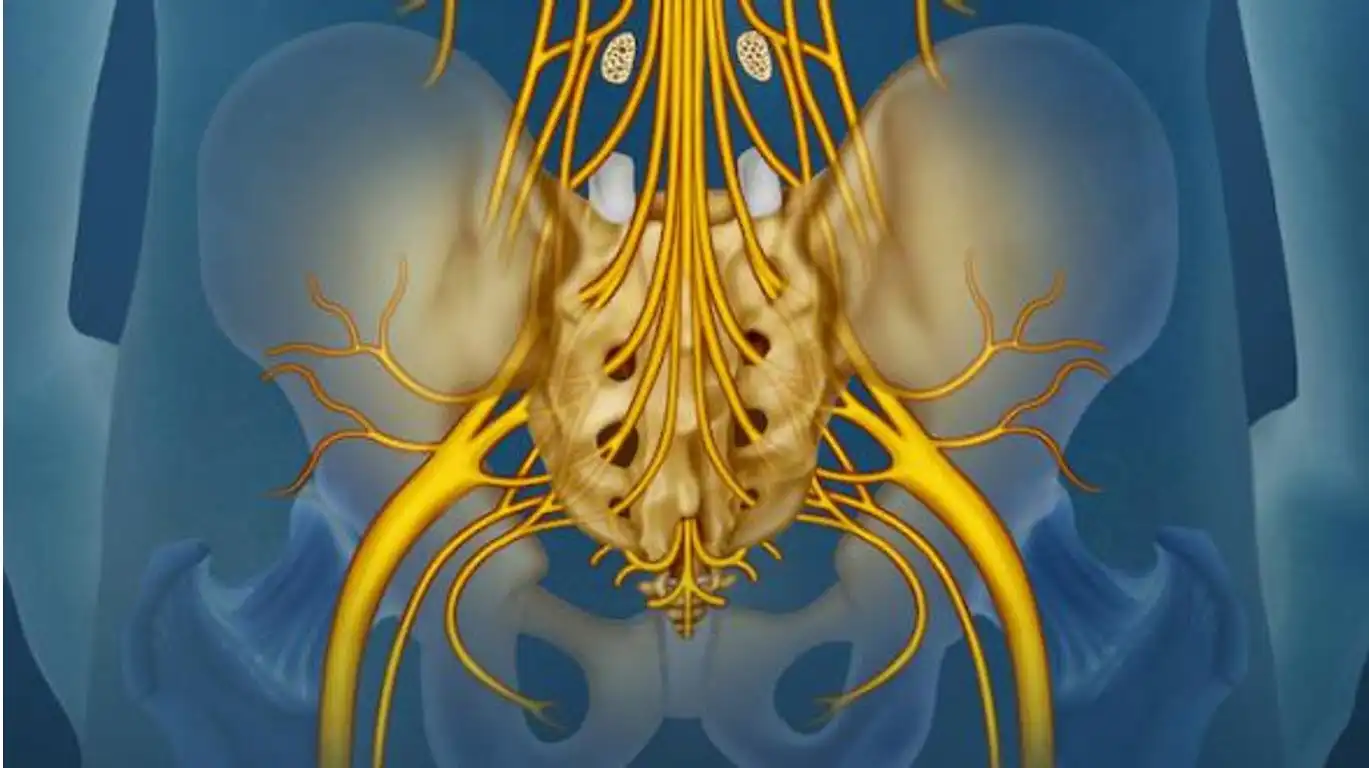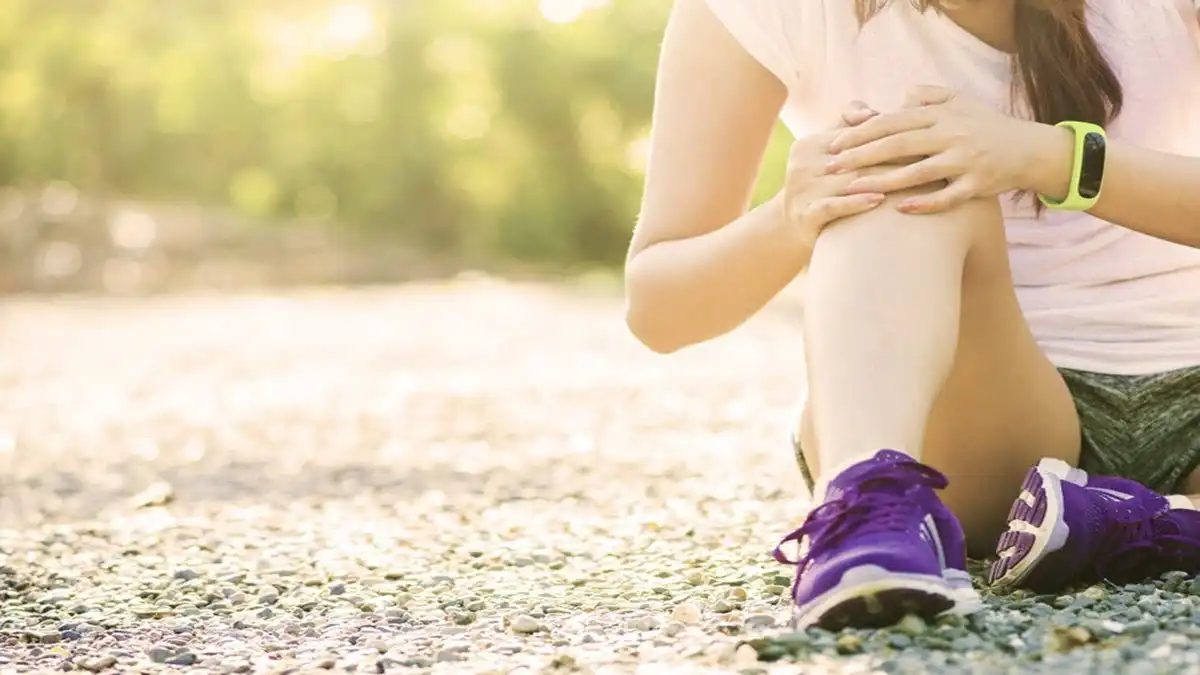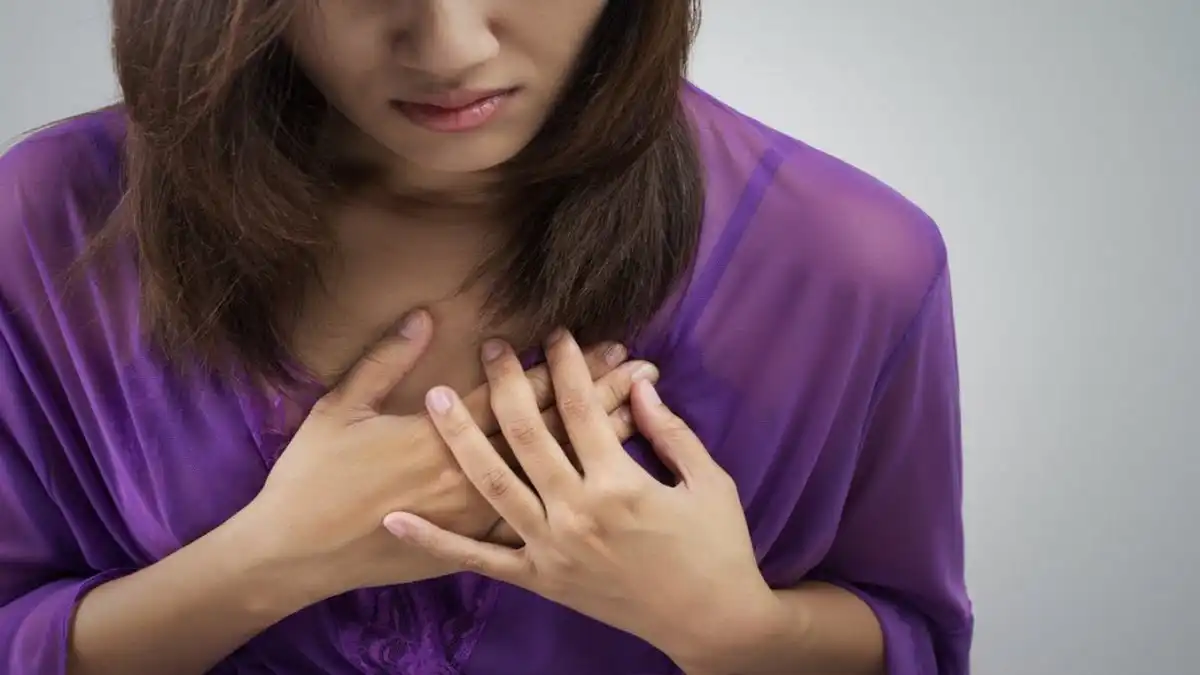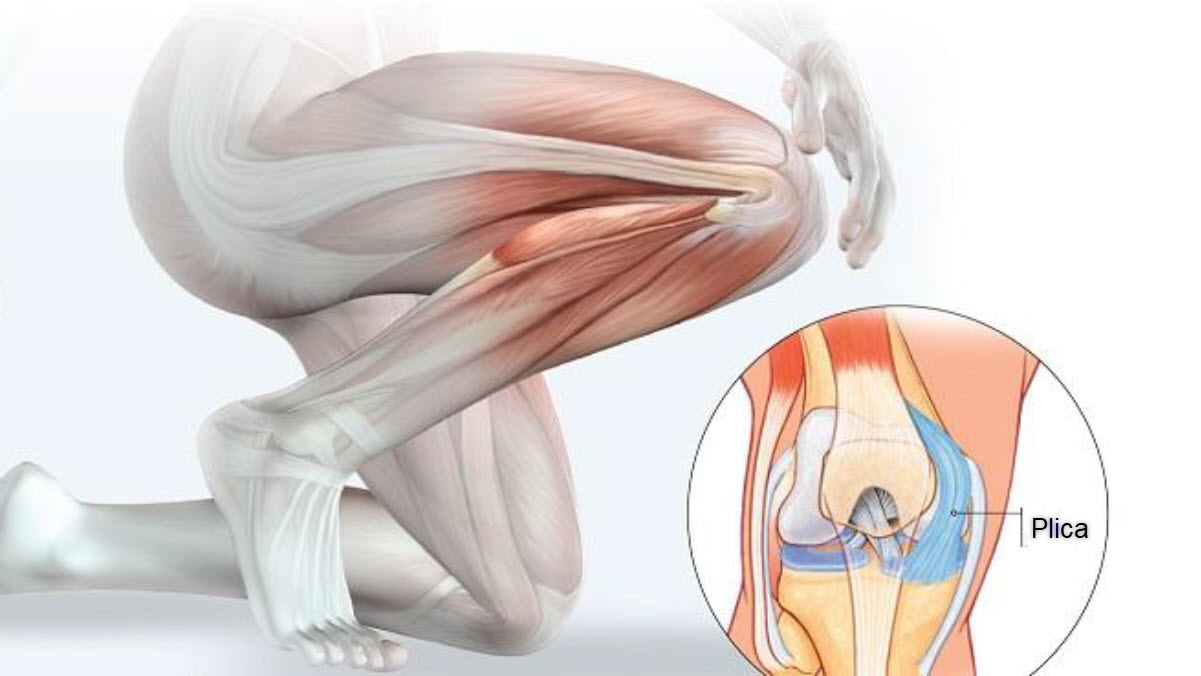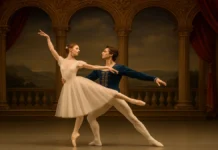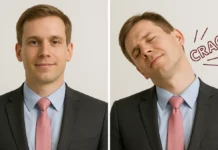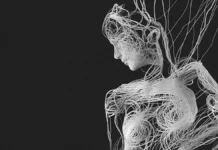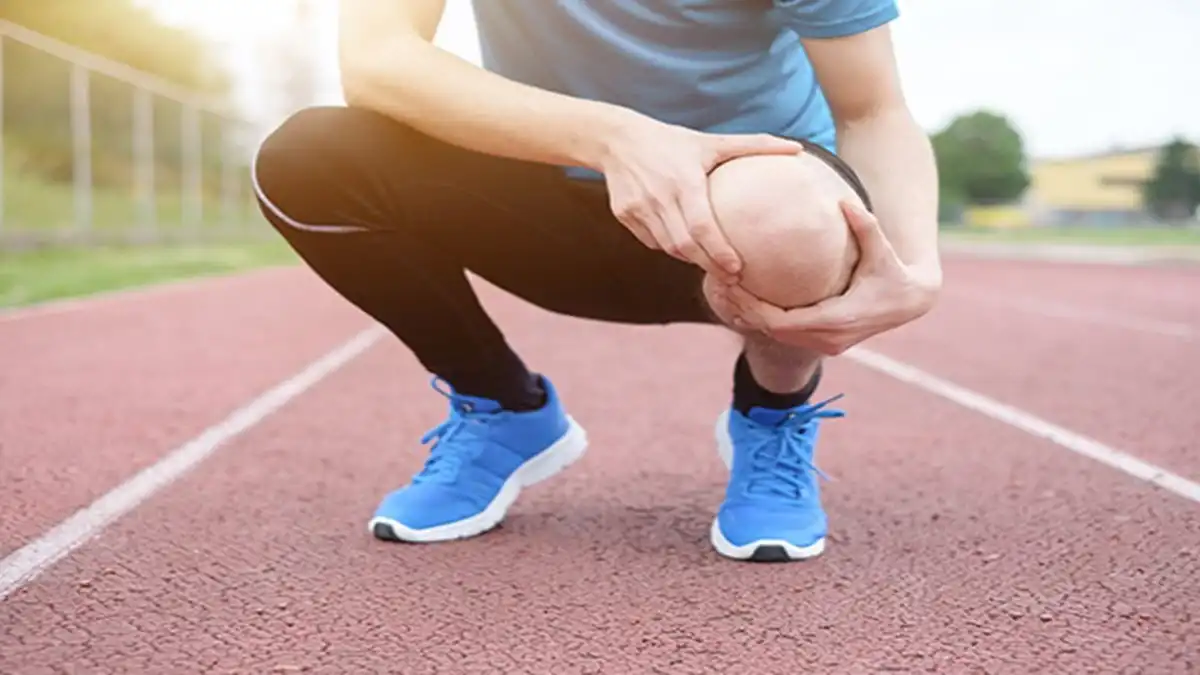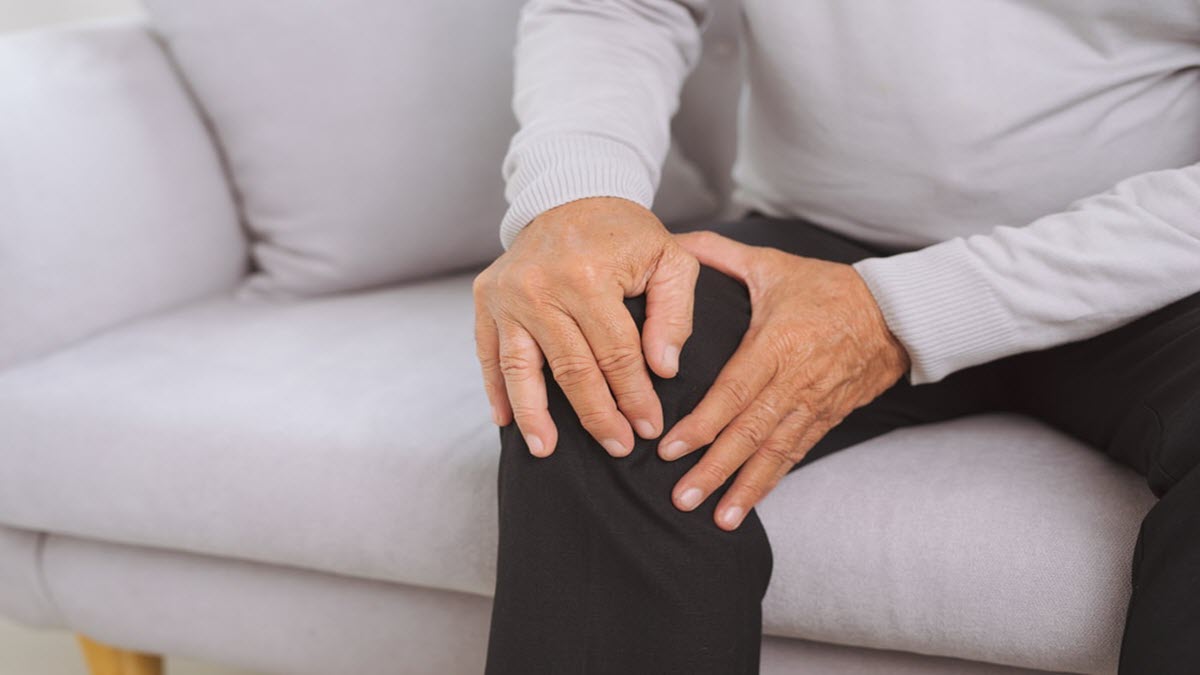When the knee bends backward
A brief overview of the often misunderstood genu recurvatum and its impact on overall body alignment
Genu recurvatum, or knee hyperextension, is an often overlooked condition with significant repercussions on posture and body biomechanics. It is characterized by excessive extension of the knee joint when standing, to the point that the leg appears to arch backward. Although it can be physiological in some hyperlax individuals or young children, it becomes pathological when it causes pain, instability, or an alteration of the postural chain. In osteopathy, this biomechanical singularity deserves special attention, as it is never isolated: it often reveals a global adaptation of the body.
Understanding genu recurvatum: between structure and compensation
Genu recurvatum can be congenital, post-traumatic, or functional in origin. In functional cases, it often develops gradually, as a result of poor posture, muscle imbalance, or the after-effects of sprains. The knee joint then loses its neutrality, and the tibia moves backward relative to the femur, creating excessive tension on the cruciate ligaments and posterior tissues.
In some patients, this hyperextension is bilateral, while in others, it affects only one knee. The clinical picture can range from asymptomatic to diffuse knee pain, balance disorders, or secondary pathologies such as tendinopathies, lower back pain, or even tension headaches. Because as soon as the knee axis is disrupted, the entire body architecture adjusts in compensation.
A cascading postural imbalance
Genu recurvatum is not a simple morphological detail. In osteopathy, it is frequently observed that it is accompanied by upward tension (up to the pelvis, spine and sometimes the cervical vertebrae) or downward tension (impacting the ankles and the arch of the foot). In hyperextension, the knee locks the posterior chain, preventing proper distribution of support on the ground. This often leads to an anterior tilt of the pelvis, exaggerated lumbar lordosis and overload on the overlying and underlying joints.
The myofascial system then comes into play: the hamstrings, triceps surae, psoas, and spinal muscles can contract chronically to stabilize an unbalanced posture. These muscular tensions, in turn, maintain the initial imbalance. It then becomes difficult to determine whether the genu recurvatum is the cause or the consequence of the postural imbalance—a typical situation in osteopathy, where compensatory loops subtly establish themselves over time.
Clinical diagnosis and observation elements
Diagnosis is based primarily on observing posture while standing. An attentive osteopath or therapist will notice a tibial line that moves back in relation to the femur, sometimes associated with hyperlordosis, shoulder retroversion, or a generalized hyperextension posture. Passive joint testing will confirm excessive extension range, beyond the usual 10°.
It is important to look for possible underlying causes: ligamentous laxity, subtle neurological disorder, quadriceps muscle deficit, or proprioceptive imbalance. An assessment of the foot, pelvis, and spine is essential to understand the overall impact of genu recurvatum on the patient’s postural balance.
The osteopathic approach: restoring function, re-educating the axis
Osteopathy offers a comprehensive and refined approach to this type of disorder. The goal is not to “correct” the knee by force, but to release the restricted areas that disrupt the joint axis. Myofascial techniques, tissue balancing, normalization of the pelvis and vertebral hinges (particularly L5/S1 and D12/L1) are often essential to restore balanced dynamics.
The osteopath can also work on proprioceptive receptors , particularly in the feet, ankle and knee, in order to restore the patient’s awareness of their posture when supporting themselves. The integration of breathing exercises is also relevant, because a fixed posture in extension is often accompanied by a diaphragm that is not very mobile and a neurovegetative system in hypertonia.
Towards postural autonomy
Osteopathic treatment of genu recurvatum cannot be complete without active patient participation . Targeted rehabilitation, including muscle strengthening of the hamstrings and triceps surae , psoas stretching , and postural awareness , is essential to stabilize results. The temporary use of proprioceptive insoles can also be useful in certain cases.
What genu recurvatum teaches us is that a simple knee that “stretches too much” can be the visible sign of an invisible imbalance. Through it, the whole body speaks—or compensates. The osteopath, by seeking to listen beyond the local symptom, becomes a craftsman of inner alignment.
The Multiple Origins of Genu Recurvatum: Understanding for Better Treatment
Genu recurvatum, this excessive hyperextension of the knee, may at first glance appear to be only a local mechanical anomaly. However, when observed in a global osteopathic approach, it often reveals a broader compensatory balance , involving the body history, postural habits, and even the psycho-corporeal experience of the patient. Identifying the origins of genu recurvatum is therefore not limited to a simple joint analysis, but invites us to go back up the chains of compensation and listen to what the body is trying to say through this posture.
An unknown constitutional laxity
In many patients, genu recurvatum originates from constitutional ligament hyperlaxity . This type of profile is often observed in children, adolescents, or certain very flexible adults, whose connective tissues have greater than average elasticity. Excessive ligament flexibility can make the knee joint unstable, particularly during prolonged standing, and promote a backward tilt of the tibiofemoral axis.
This phenomenon is not pathological in itself. Many hyperlax individuals experience no symptoms. But when it sets in in a body subjected to repeated mechanical stress—a sedentary lifestyle, standing work, intensive sports, repeated minor trauma—this flexibility becomes a breeding ground for chronic imbalances.
In osteopathy, it is important to accompany these patients gently, respecting the flexible nature of their tissues , without seeking to “tone” at all costs, but rather to teach them to perceive the limits of their joints and to actively stabilize their posture.
Traumatic after-effects: the body adapts
Another common cause of genu recurvatum is post-traumatic compensation . A poorly rehabilitated ankle sprain, a partial rupture of the anterior cruciate ligament, a road accident, a fall—all these events can lead to a change in the alignment of the lower limb. The body, in its adaptive logic, can then recruit hyperextension of the knee to stabilize a joint that has lost its bearings.
These adaptations are often silent at first. The patient can live for months, even years, without obvious pain. Then, gradually, distant symptoms appear: lower back pain, instability when walking, muscle fatigue, diffuse pain. It is only upon careful observation of the posture under load that the attentive clinician will notice a compensatory genu recurvatum, often on one side only, indicating an attempt to balance on disturbed terrain.
The neurological factor: an avenue to explore
In some rarer but important cases, genu recurvatum can result from a subtle neurological disorder . After a minor stroke, moderate pyramidal syndrome, or motor pathway damage, it is not uncommon to observe hyperextension of the knee when walking or standing. This phenomenon, called neurogenic recurvatum, results from a deficit in motor control of the quadriceps or knee flexor muscles.
In these cases, the body compensates by passively locking the joint. This is no longer a purely mechanical disorder, but a strategy for maintaining posture in the context of motor deficit. The osteopath must then work in conjunction with other health professionals and adapt their techniques to the patient’s neuromuscular sensitivity.
The postural and behavioral origin: the body that settles
Finally, in many cases, genu recurvatum sets in gradually, thanks to daily postural habits . Just observe people standing in a queue, or during a speech: many of them naturally lock their knees in hyperextension. This posture, which may seem comfortable in the short term, temporarily relieves the stabilizing muscles… but creates chronic passive tension on the posterior ligaments and joint capsules .
Over time, this attitude becomes automatic. The patient ends up “living in their recurvatum,” to the point of losing awareness of the neutral position of their knees. This behavioral origin is particularly common in perfectionist people, who adopt a rigid or tense posture in their daily lives. The genu recurvatum then becomes the bodily expression of an inner tension , a need for control, or a fixed way of functioning.
This is where the osteopathic approach reveals its full relevance: by restoring mobility, by freeing frozen areas, but also by helping the patient become aware of their support, their breathing and their connection to verticality .
One symptom, many stories
Ultimately, there is not just one type of genu recurvatum, but a multitude of causes, pathways, tissues, and experiences . The osteopath will not seek to “correct” the knee like a mechanical part, but to understand why the body has adopted this shape : to stabilize an imbalance, to compensate for a weakness, to survive a shock, or to respond to a life posture.
By going back to the origins, taking into account the entire bodily, emotional and functional system, osteopathy offers a gentle, adapted path of exploration, respectful of each individuality.
Definition of Genu Recurvatum: A pathological hyperextension
Genu recurvatum, literally “knee bent backward,” refers to an abnormal hyperextension of the knee joint when standing or walking. It manifests as a knee extension angle exceeding normal physiological limits, usually beyond 5 to 10 degrees in adults. This sagittal misalignment may appear subtle to the untrained eye, but it has profound implications for lower limb biomechanics and overall postural organization.
Variability between normal and pathological
It is essential to distinguish between a physiological form of recurvatum and a pathological form . Some people, particularly children or individuals with constitutional hyperlaxity, may naturally have a slight recurvatum without this causing pain or dysfunction. In them, this hyperextension is generally symmetrical, reducible, and well tolerated by the musculoskeletal system.
Conversely, when recurvatum is accompanied by muscular imbalances, pain, walking disorders or ascending compensations , we speak of a pathological form. The latter can develop insidiously after trauma, partial paralysis, poor post-operative recovery or even following chronic postural imbalance.
Biomechanical definition criteria
Clinically, genu recurvatum is defined as the axis of the leg, seen from the side, showing a clear recoil of the knee from the vertical axis of the femur and tibia. This results in active or passive hyperextension , which can be observed when standing, walking, or during specific tests.
Several criteria make it possible to objectify this condition:
- Hyperextension angle measured with a goniometer, beyond 5° in adults.
- Asymmetry between the two knees , often a sign of pathology.
- Loss of muscle locking : the posterior muscles (hamstrings, gastrocnemius) are no longer able to properly stabilize the joint.
- Deviation of the functional axis : the body weight is no longer distributed along the normal mechanical axis.
In some severe cases, recurvatum is also accompanied by anterior instability of the knee , or even ligament injuries (particularly of the anterior cruciate ligament), patellar subluxations or premature wear of the femoro-tibial cartilage.
A pathology with many faces
Genu recurvatum can be congenital , developmental , or acquired . In infants or young children, it is sometimes linked to incomplete muscle maturation , intrauterine malposition , or early neurological disorders (e.g., cerebral palsy).
In adults, it can occur:
- After knee trauma (sprain, fracture, poorly recovered surgery),
- In connection with a neurological pathology (hemiparesis, damage to the sciatic or femoral nerve),
- By postural compensation (following an inequality in limb length, muscular weakness or joint limitation on the opposite side),
- Among athletes , particularly in gymnastics, dance, martial arts or athletics, where hypermobility is valued but can lead to joint fragility.
Unilateral vs. bilateral genu recurvatum
In osteopathic practice, it is essential to differentiate a symmetrical bilateral recurvatum , often constitutional, from a unilateral recurvatum which almost always suggests pathological compensation or a lesion consequence. Asymmetry of leg carriage, foot support disorders, rotation of the pelvis or trunk, are all clues which indicate a disturbance of the global dynamics.
The osteopath and genu recurvatum
For the osteopath, genu recurvatum is not a simple local defect, but an alarm signal of a wider imbalance , whether mechanical, neurological or postural. It is therefore a question of including it in a global assessment , integrating plantar supports, posture, pelvis, spine, shoulder and pelvic girdles, as well as any emotional dimensions (trauma, chronic compensation, body schema).
Understanding this pathology also means perceiving the language of the body in its effort to adapt , sometimes to the detriment of joint harmony.
Causes of Genu Recurvatum: From Compensation to Malformation
Genu recurvatum is not a homogeneous entity; rather, it is the point of convergence of multiple etiological factors , sometimes intertwined. Understanding its causes means entering into a detailed reading of the biomechanical, neurological, postural, and even emotional imbalances that shape our way of standing and walking. The osteopath, in his global approach, must identify the origins in order to guide his treatment in a relevant and sustainable manner.
1. Congenital and developmental forms
Some people are born with significant ligament laxity or specific bone axes that promote hyperextension of the knee. This constitutional genu recurvatum is often bilateral, asymptomatic in childhood, but can become problematic in adulthood when pain develops or posture alters over time.
In infants and young children, a marked recurvatum can also be the consequence of:
- From a prolonged fetal position with hyperextension of the lower limbs,
- From a bone or joint malformation (tibia dysplasia, patellofemoral instability),
- Or a global motor delay , particularly in cases of prematurity.
Particular vigilance is required for these young patients, in order to detect early persistent deformities which could harm the development of walking.
2. Neurological origins: the knee as a symptom of deficient motor control
In many cases, genu recurvatum is neurological in origin . It occurs when the central or peripheral nervous system can no longer effectively control the stabilizing muscles of the knee, particularly the hamstrings and gastrocnemius.
It is found in particular in:
- Cerebral palsy ,
- Stroke after-effects (hemiparesis),
- Peripheral neuropathies ( damage to the sciatic nerve, femoral nerve or sensory motor branches),
- Certain multiple sclerosis or chronic motor syndromes.
The knee then hyperextends due to a lack of muscle control, often linked to quadriceps spasticity or weakness of the posterior muscles. This hyperextension becomes a postural compensation mechanism to maintain standing balance or stabilize walking despite motor failure.
3. Traumatic and post-surgical causes
Trauma to the knee or lower limbs can lead to secondary genu recurvatum, especially if tissue and proprioceptive recovery is incomplete.
The main causes are:
- Severe sprains with ligament rupture, particularly of the ACL or posterior ligament,
- Tibial or femoral fractures that have modified the axis of the leg,
- Orthopedic surgeries (osteotomies, arthroplasties, bone lengthening) having altered joint balance,
- Arthrofibrosis or abnormal scarring that has modified the biomechanics of the knee.
In these cases, recurvatum often appears gradually, as the person gradually puts weight on the misaligned knee. It may be hidden at first and then become painful or disabling.
4. Postural and dysfunctional causes: the osteopathic vision
The osteopathic approach pays particular attention to functional causes . A genu recurvatum can develop slowly, in an unbalanced body, where successive compensations result in hyperextension of the knee. Among the common postural factors:
- Weakness or inhibition of the hamstrings ,
- Posterior pelvic tilt , which pushes the center of gravity backward,
- Flat or unstable feet , modifying the support line of the lower limb,
- Scoliosis or vertebral imbalances , requiring distal adjustments,
- Inequality of length of lower limbs ,
- History of prolonged wearing of high heels , promoting knee recoil.
In these cases, recurvatum is not an isolated pathology but the reflection of an unbalanced postural dialogue . The body compensates where it can, at the cost of joint overwork and non-physiological joint support.
5. Constitutional or acquired hypermobility
Some people have generalized ligament hyperlaxity , with joints that can extend beyond the normal range of motion without pain. Genu recurvatum then fits into a broader picture of hypermobility syndrome (e.g., hypermobile Ehlers-Danlos type), often associated with widespread pain, chronic fatigue, and proprioceptive disturbances.
In other cases, this hypermobility is acquired , particularly in athletes or dancers who have been encouraged to exceed their natural ranges (hyperextension, splits, arabesque, etc.). The risk is then of developing functional instability masked by apparent performance.
Postural and Functional Consequences: A knee that disrupts the body
Genu recurvatum is never a simple “local defect.” This hyperextension of the knee causes a cascade of ascending and descending biomechanical compensations that affect the entire body. Well beyond the joint itself, it is the overall postural balance , the dynamics of walking and the distribution of joint stresses that are disrupted. For the osteopath, understanding these repercussions is essential in order to restore harmonious and lasting functionality.
Posterior chain disorganization
Genu recurvatum alters the knee’s fundamental role as a shock absorber and intermediate stabilizer between the hip and ankle. By tilting backward, the knee stiffens the support instead of absorbing the stresses. This excessively extended joint locking causes permanent tension in the posterior muscle chain , from the triceps surae to the erector spinae muscles.
Frequent results:
- Hypertonicity of the gastrocnemius, hamstrings and lumbar muscles,
- Poor involvement of knee flexors, resulting in agonist/antagonist imbalance,
- Stiffening of the pelvis and loss of segmental mobility,
- Compensation by an accentuated lumbar lordosis or a retroversion of the pelvis, depending on the individual.
These tensions alter the flexibility and adaptability of the body , affecting both static posture and dynamic gestures.
Gait Alteration: The Cycle of Instability
Walking becomes a key indicator of imbalances caused by genu recurvatum. Indeed, this joint hyperextension modifies:
- The support phase : the knee no longer plays its role as a shock absorber correctly when landing the step.
- Propulsion : the rear support is often shortened, poorly directed, or replaced by support on the heel which projects the person backward.
- The rhythm : to stabilize the instability, the cadence can decrease, or on the contrary accelerate jerkily to avoid imbalance.
A stiff, locked gait is frequently observed , with sudden weight transfer from one foot to the other, sometimes accompanied by pain in the hip, pelvis or lower back.
In the most severe cases (neurological or post-traumatic), walking becomes asymmetrical, with a deficit of flexion in the swing phase , use of a cane or lateral support, and an increased risk of falls .
Impact on the overlying and underlying joints
Genu recurvatum does not only affect the knee. It disrupts the entire joint mechanics of the leg and trunk, generating compensatory functional overloads .
In guarantee :
- Ankle : With the alignment of the tibia disrupted, the ankle is subjected to repeated microtraumas, particularly in the dorsiflexion position. This can lead to subtalar pain, Achilles tendinopathy, or plantar fasciitis.
- Foot : the dynamics of support are altered, leading to disorders of the plantar arch (collapse, excessive tension), corns, or unbalanced support.
Upstream :
- Hip : An imbalance in the lower kinetic chain can lead to joint blockage, overloading of the psoas or gluteus medius, or even tendinopathy of the tensor fascia lata.
- Pelvis : Sacroiliac movements are often limited, causing compensatory pelvic tilt.
- Spine : Lumbar hyperlordosis or thoracic rollover may occur depending on postural profiles.
All these bodily adjustments are movement survival strategies , but in the long term, they lead to chronic fatigue, persistent pain or functional limitations.
Proprioceptive disorders and postural fatigue
Genu recurvatum also disrupts proprioception , that is, the body’s ability to perceive its position in space. The knee, normally very rich in proprioceptive sensors (ligaments, capsule, periarticular muscles), loses quality of information when it is constantly locked.
The subject then loses the feeling of active stability , and compensates with unconscious muscular tension. This promotes:
- Increased postural fatigue ,
- A feeling of instability , sometimes accompanied by dizziness or loss of balance,
- A decrease in fine motor coordination , especially in children or the elderly.
In some cases, this also translates into an apprehension of movement , a fear of falling, or an attitude of bodily withdrawal.
Body memories and chronic somatization
In a more holistic approach, genu recurvatum can sometimes be a sign of a body pattern of withdrawal , an unconscious protective mechanism of the body that refuses to engage forward. Arching or locking the knee can symbolize a need to hold back, to stabilize oneself in a world perceived as uncertain or threatening.
In some patients, particularly those who have experienced trauma or chronic pain, this posture becomes rooted as a somatic trace , difficult to correct until comprehensive work – physical, postural and sometimes emotional – is undertaken.
Clinical Assessment: How to Recognize Genu Recurvatum?
Detecting a genu recurvatum is not limited to observing a leg that “goes backward.” It is a comprehensive, dynamic, and sensory examination that allows us to understand its presence, nature, and, above all, its significance for the patient’s body. The osteopath, with their holistic perspective, is not satisfied with a mechanical assessment: they perceive genu recurvatum as the visible symptom of a deeper imbalance. Here are the steps and tools for a complete assessment.
Postural observation: the body speaks in silence
The first approach is static , with the patient standing, barefoot, in natural support. The osteopath’s gaze sweeps over the entire body, but focuses on:
- The line of gravity : Normally, the knee should align vertically with the center of gravity. In the case of recurvatum, it passes behind this line.
- The shape of the popliteal fossa : A hyperextended knee further hollows out the back of the knee, sometimes associated with visible tension in the gastrocnemius muscles.
- Asymmetry between the two legs : a difference in extension or alignment between the two knees is often a sign of an acquired pathology.
- Ascending compensations : lumbar hyperlordosis, forward projection of the pelvis, retracted rib cage.
The osteopath may also suggest filming or photographing the patient in profile in order to compare postural changes over time.
Dynamic examination: looking for hidden imbalances
Genu recurvatum often reveals itself in movement , more than in static posture. Gait analysis is therefore essential:
- Stance phase : Does the patient place the heel abruptly? Does the knee lock the support without an intermediate absorption phase?
- Propulsion phase : is there a lack of muscle relaxation, rigid propulsion?
- Rhythm and symmetry : is there a shorter step, a backward flight or postural instability?
- General flexibility : does the trunk follow the movement or does it remain fixed?
The osteopath can supplement this observation with tests of toe-raising , deep flexion or single-legged recoil , in order to assess the quality of motor control.
Specific knee extension tests
Once the overall observations have been made, it is necessary to objectify the knee hyperextension precisely. Several tests can be carried out:
- Goniometry : measurement of the passive extension angle. Beyond 5° in adults, recurvatum is considered significant.
- Passive test in the supine position : the leg is raised in extension, keeping the heel on the ground; hyperextension is measured by the angle formed at the knee.
- Single-leg support test : we observe whether the knee moves further back on the supporting leg.
- Anterior stability test : assessment of ligament tone, particularly of the ACL, if laxity is suspected.
These tests must be carried out gently , without forcing the joint, in order to respect the tissues and not trigger unnecessary pain.
Tissue and Osteopathic Assessment: What the Hand Feels
The osteopathic approach is distinguished by manual listening to the tissues and joints. During the palpatory assessment, the therapist looks for:
- Tension or hypotonia of the posterior muscles (hamstrings, gastrocnemius),
- Joint fixations at the knee, but also at the ankle, pelvis, hip and lumbar spine,
- Mobility of the femoral fascia , which can wrap around the knee in a dysfunctional spiral,
- Alterations in tissue fluctuation , a sign of chronic locking.
Manual feeling also allows the detection of the presence of a body protection pattern , tissue folding or dissociation between the affected segment and the rest of the body.
Neurological and proprioceptive approach
A sometimes neglected but fundamental aspect: the evaluation of proprioceptive pathways and postural reflexes . Genu recurvatum is often associated with:
- A decrease in deep sensitivity (particularly in the foot and ankle),
- A delay in reflex postural adjustment (reaction time to instability),
- Fine motor incoordination .
The osteopath can carry out balance tests (unipodal support with eyes closed), backward walking, reaction to lateral imbalances, or even foot stimulation , to assess the body’s response to instability.
When assessment becomes therapeutic
In the osteopathic sensory approach, the assessment itself can trigger an awareness in the patient. Feeling that their knee moves back, that their pelvis compensates, that their breath stops with each joint lock, becomes a powerful therapeutic key. This can initiate global bodywork, nourished by postural education and active listening to the bodily experience .
Clinical Assessment: How to Recognize Genu Recurvatum?
Detecting a genu recurvatum is not limited to observing a leg that “goes backward.” It is a comprehensive, dynamic, and sensory examination that allows us to understand its presence, nature, and, above all, its significance for the patient’s body. The osteopath, with their holistic perspective, is not satisfied with a mechanical assessment: they perceive genu recurvatum as the visible symptom of a deeper imbalance. Here are the steps and tools for a complete assessment.
Postural observation: the body speaks in silence
The first approach is static , with the patient standing, barefoot, in natural support. The osteopath’s gaze sweeps over the entire body, but focuses on:
- The line of gravity : Normally, the knee should align vertically with the center of gravity. In the case of recurvatum, it passes behind this line.
- The shape of the popliteal fossa : A hyperextended knee further hollows out the back of the knee, sometimes associated with visible tension in the gastrocnemius muscles.
- Asymmetry between the two legs : a difference in extension or alignment between the two knees is often a sign of an acquired pathology.
- Ascending compensations : lumbar hyperlordosis, forward projection of the pelvis, retracted rib cage.
The osteopath may also suggest filming or photographing the patient in profile in order to compare postural changes over time.
Dynamic examination: looking for hidden imbalances
Genu recurvatum often reveals itself in movement , more than in static posture. Gait analysis is therefore essential:
- Stance phase : Does the patient place the heel abruptly? Does the knee lock the support without an intermediate absorption phase?
- Propulsion phase : is there a lack of muscle relaxation, rigid propulsion?
- Rhythm and symmetry : is there a shorter step, a backward flight or postural instability?
- General flexibility : does the trunk follow the movement or does it remain fixed?
The osteopath can supplement this observation with tests of toe-raising , deep flexion or single-legged recoil , in order to assess the quality of motor control.
Specific knee extension tests
Once the overall observations have been made, it is necessary to objectify the knee hyperextension precisely. Several tests can be carried out:
- Goniometry : measurement of the passive extension angle. Beyond 5° in adults, recurvatum is considered significant.
- Passive test in the supine position : the leg is raised in extension, keeping the heel on the ground; hyperextension is measured by the angle formed at the knee.
- Single-leg support test : we observe whether the knee moves further back on the supporting leg.
- Anterior stability test : assessment of ligament tone, particularly of the ACL, if laxity is suspected.
These tests must be carried out gently , without forcing the joint, in order to respect the tissues and not trigger unnecessary pain.
Tissue and Osteopathic Assessment: What the Hand Feels
The osteopathic approach is distinguished by manual listening to the tissues and joints. During the palpatory assessment, the therapist looks for:
- Tension or hypotonia of the posterior muscles (hamstrings, gastrocnemius),
- Joint fixations at the knee, but also at the ankle, pelvis, hip and lumbar spine,
- Mobility of the femoral fascia , which can wrap around the knee in a dysfunctional spiral,
- Alterations in tissue fluctuation , a sign of chronic locking.
Manual feeling also allows the detection of the presence of a body protection pattern , tissue folding or dissociation between the affected segment and the rest of the body.
Neurological and proprioceptive approach
A sometimes neglected but fundamental aspect: the evaluation of proprioceptive pathways and postural reflexes . Genu recurvatum is often associated with:
- A decrease in deep sensitivity (particularly in the foot and ankle),
- A delay in reflex postural adjustment (reaction time to instability),
- Fine motor incoordination .
The osteopath can carry out balance tests (unipodal support with eyes closed), backward walking, reaction to lateral imbalances, or even foot stimulation , to assess the body’s response to instability.
When assessment becomes therapeutic
In the osteopathic sensory approach, the assessment itself can trigger an awareness in the patient. Feeling that their knee moves back, that their pelvis compensates, that their breath stops with each joint lock, becomes a powerful therapeutic key. This can initiate global bodywork, nourished by postural education and active listening to the bodily experience .
Rehabilitation and Complementary Exercises: Strengthening and Guiding Movement
Osteopathy offers a subtle and comprehensive treatment for genu recurvatum. But to ensure lasting improvement, it is often necessary to complement manual treatment with targeted rehabilitation , adapted to the patient’s physiology and experience. This rehabilitation is not limited to “strengthening the muscles”: it aims above all to restore functional integration , confidence in movement , and a refined body awareness .
Strengthening the knee flexors: restoring the agonist-antagonist balance
One of the characteristics of genu recurvatum is the weakness or inhibition of the posterior muscles , particularly the hamstrings . These muscles play a key role in active stabilization of the knee at the end of extension . Their deficit leaves the quadriceps and passive structures (capsule, ligaments) to support the posture alone.
Targeted strengthening exercises include:
- Leg bends on the floor or on a ball , with slow and precise control of the movement,
- Gluteal bridge (hip bridge) with push in the heels, to activate the hamstrings and glutes in synergy,
- Light deadlifts (straight-legged deadlifts) with elastic or small weights,
- Closed chain work : hamstring squat, reverse lunge, slow step up.
The watchword: quality of movement rather than load , with attention paid to breathing, posture, and feeling.
Work on trunk and pelvic stability: anchor the lower limb
Genu recurvatum often occurs in a body with a poorly integrated center of gravity . It is therefore crucial to strengthen the stability of the trunk and pelvis , particularly in the sagittal and frontal planes.
Helpful exercises include:
- Gentle abdominal strengthening (dynamic planks, bird-dog, hollow-body holds),
- Work on the transverse and oblique muscles , essential for stabilizing the pelvis when walking,
- Strengthening of the pelvic-trochanteric muscles , such as the gluteus medius, often inhibited by an imbalance of the lower limb,
- Active pelvic tilt work , in a lying or sitting position, to restore mobility and awareness to the pelvis.
These exercises can be introduced gradually after osteopathic techniques, when the tissues are released and available for active engagement.
Proprioceptive rehabilitation: reconnecting the knee to space
A recurvatum knee often becomes a poorly “felt” segment . Its stability is ensured by locking rather than by fine regulation. It is therefore necessary to re-educate proprioception , that is to say the body’s ability to perceive and adjust its position in space.
Tools and methods:
- Single-legged support on unstable ground (soft mat, proprioceptive cushion, half-ball),
- Work on an inclined plane to readapt the ankle and knee at various angles,
- Slow walking with awareness , possibly with eyes closed, concentrating on the feeling of the ground,
- Visual or auditory feedback exercises , to reconnect gestures to the sensory system.
The goal is not to “correct” a fixed posture, but to offer the body new sensory experiences , so that it finds an active balance.
Adapted stretching and release of persistent tension
Certain muscles, such as the quadriceps (especially the rectus femoris), the psoas or the gastrocnemius, can maintain an anterior traction on the knee , promoting recurvatum. Gentle, progressive and well-targeted stretches are therefore indicated:
- Stretching the quadriceps in a lateral lying position , without arching the back,
- Stretching of the psoas with activation of the transverse , to avoid lumbar compensation,
- Release of the twins and the sural triceps , in a straight leg position, heel on the ground.
Caution: Stretching should be done with respect for your body’s sensations , without forcing or creating pain. Calm, deep breathing should always accompany the movement.
Functional integration and global movement
Rehabilitation cannot remain segmental. It must be integrated into global, sensory and functional movements , so that the knee finds its rightful place in the body chain.
Some suggestions:
- Mindful walking in the great outdoors , feeling every support, every bounce,
- Mirror work , to better integrate asymmetries and correct them through the image,
- Therapeutic dance or free movement , where the knee can “express itself” without constraint,
- Qi Gong or Feldenkrais , to develop a fluid, internal movement that respects the structure.
The important thing is to give the patient back the freedom to move without fear , with pleasure and confidence.
Osteopathic support for the rehabilitation process
Throughout this active work, the osteopath can provide support:
- By releasing secondary blockages that appeared during rehabilitation,
- By supporting the patient in their bodily awareness,
- By adjusting the steps according to the evolution of tissue sensation.
This dialogue between manual care and active movement is the richness of the osteopathic approach to genu recurvatum.
Prevention and Monitoring: Move Better to Last
Osteopathic treatment for genu recurvatum does not stop at the treatment table. It is part of a long-term approach , where the patient becomes an actor in their own balance. Preventing recurrence, supporting postural development and strengthening bodily autonomy are the pillars of effective monitoring. This preventive approach not only helps avoid worsening, but also re-educates the relationship to movement, support and verticality .
Understanding risk factors to better avoid them
Prevention of genu recurvatum begins with identifying the factors that promote its onset or chronicity . These elements may be related to lifestyle, postural habits or the patient’s personal context.
Main risk factors to watch out for:
- Prolonged sedentary lifestyle , particularly in a sitting position with legs stretched out or crossed,
- Wearing unsuitable shoes (high heels, soles that are too rigid or worn),
- Poorly balanced overtraining in sports , with excessive strengthening of the quadriceps to the detriment of the hamstrings,
- Poorly recovered surgical or traumatic history (knee, pelvis, back),
- Compensatory body schema : person who pushes their supports backward, locks their knees when standing, or compensates for higher instability (foot, hip, lumbar),
- Chronic fatigue and body perception disorders, often ignored but nevertheless decisive.
Identifying these elements in the anamnesis allows us to adapt the advice and exercises to each profile.
Postural tips for daily life
Daily posture plays a central role in stabilizing or decompensating genu recurvatum. Simple adjustments can make a big difference if incorporated consciously:
- Standing : avoid locking your knees in extension, learn to micro-flex naturally to release tension,
- Sitting : prefer symmetrical support, feet on the ground, avoiding positions that pull the knees back (e.g.: legs stretched out under the chair),
- Going up and down stairs : be aware of the active role of the knee flexor and do not rush the movement,
- Footwear : choose comfortable, slightly flexible shoes with good arch support and a stable sole.
These small adjustments promote a dynamic posture , where the knee remains functional and flexible rather than rigid and hyperextended.
Pacing osteopathic follow-ups: between prevention and readjustment
Since genu recurvatum is often a reflection of a chronic imbalance , spaced but regular osteopathic follow-up is recommended. It allows:
- To detect recurrences or emerging imbalances early,
- To adjust the body schema as the patient evolves (new activity, change of posture, aging),
- To support work of bodily reappropriation through tissue awareness, breathing and sensory movement.
The frequency of follow-ups depends on the context:
- Every 3 months for active people or those with persistent instability,
- Every 6 months during the consolidation phase or for prevention,
- Occasionally in the event of a change in life (travel, pregnancy, resuming sport, changing shoes, etc.).
This rhythm is of course adapted to the patient’s reality , to their commitment and to their bodily listening.
Patient education: transmit to empower
One of the major axes of osteopathic prevention is patient education . It is not just about informing, but about transmitting autonomy in the perception and management of one’s own body .
Concrete educational avenues:
- Learn to recognize the signs of recurvatum returning : tension in the popliteal fossa, instability when standing, pain when walking or leg fatigue.
- Encourage regular self-assessment of the body : knee position at rest, plantar support, pelvic posture.
- Introduce simple body rituals (morning stretches, supported breathing, anchoring while standing consciously).
- Advise on integrative body practices : gentle yoga, qi gong, Pilates, barefoot walking.
This progressive empowerment changes the therapeutic dynamic: the patient becomes co-creator of his postural health , and no longer just a recipient of treatment.
Prevention among young people: a motor education issue
In children and adolescents, genu recurvatum can develop insidiously. It is therefore essential to take preventive action from a young age , especially if we observe:
- Constitutional hyperlaxity,
- Prolonged poor sitting posture,
- An asymmetrical sporting practice (dance, gymnastics, etc.),
- A history of falls or lower limb injuries.
Education in conscious motor skills , balanced play, and the exploration of free movement constitutes a fundamental foundation for preventing the development of lasting imbalances.
Open conclusion: A posture to be reinvented
Genu recurvatum is not just a joint anomaly. It is often the silent reflection of a larger imbalance , inscribed in the tissue, posture and sometimes the history of the body. By unconsciously moving the knee back, the body sometimes seeks to compensate for a flaw, an instability, a lack of reference in gravity. And this is precisely where the osteopathic approach reveals all its richness: it does not treat a knee, it accompanies a human being in his relationship to the ground, to verticality, to his personal trajectory.
What we thought was just an excessive angle then becomes a gateway to a global reading of living movement . A tension here, an inhibition there, a discreet locking elsewhere, all this composes a bodily music that can go out of tune without noise… until pain, fatigue, or a fall call us to order.
The challenge, therefore, is not only to “correct” the angle of a knee, but to relearn how to move with confidence , to anchor oneself without rigidity, to restore the knee to its role as a relay joint – flexible, adaptive, reactive. It is not a question of imposing a postural standard, but rather of inviting each body to find its own coherence , through respectful, subtle and embodied therapeutic guidance.
In this process, the osteopath becomes a facilitator of bodily reconquest . Through his touch, his listening, his adjusted gestures, he helps the patient to rediscover forgotten supports, to release chronic tensions, to reintegrate extinguished zones. He does not direct; he reveals what was already there, but which the patient had ceased to perceive.
The genu recurvatum also reminds us that posture is not fixed : it is constantly adapting. It is the imprint of our experiences, our injuries, our habits… but also the fertile ground for our transformation. The body is never a given, it is always evolving , capable of resilience, reorganization, reinvention.
This perspective opens up valuable avenues for prevention, particularly in children, dancers, the elderly, and post-operative patients. But above all, it invites us to adopt a sensitive ethic of care : care that does not seek to repair the body like a machine, but to accompany it like a living, complex, and shifting memory.
So, if the genu recurvatum is sometimes a “knee that goes backward,” could we not see it, symbolically, as an invitation to move forward differently ? To straighten up without tensing up, to open up without losing our balance, to walk in the world with a little more awareness of the path… and of the ground beneath our feet.
References
1. Biomechanical and clinical references
- Lewek, MD, et al. (2002). Biomechanical Consequences of Knee Hyperextension Gait . Gait & Posture, 15(3), 255–260.
→ Analysis of gait alterations in patients with genu recurvatum. - Delp, SL, et al. (1995). Biomechanics of the hip and knee during gait . Journal of Biomechanics , 28(6), 709–717.
→ Fundamental study on the interactions between hip, knee and ankle in dynamics. - Perry, J., & Burnfield, J.M. (2010). Gait Analysis: Normal and Pathological Function . SLACK Incorporated.
→ Reference work on gait analysis and disorders such as genu recurvatum.
2. References in neurology and rehabilitation
- Den Otter, AR, et al. (2006). Abnormalities in the temporal pattern of lower extremity muscle activity in hemiparetic gait . Gait & Posture , 23(2), 231–238.
→ Describes how motor coordination is impaired in hemiparetic patients with genu recurvatum. - Boudarham, J., et al. (2013). Spatiotemporal gait parameters after stroke: A review . Annals of Physical and Rehabilitation Medicine , 56(9–10), 443–451.
→ Presents the particularities of post-stroke genu recurvatum. - Brandstater, M. E., et al. (1983). Knee hyperextension in stroke patients: Incidence and contributing factors. Archives of Physical Medicine and Rehabilitation, 64(11), 490–493.
3. References in osteopathy and manual therapies
- Barral, J.-P. (2009). Osteopathy and Functional Recovery: Tissue and Visceral Approaches . Sully Editions.
→ Global approach to the body, integrating tissue imbalances linked to posture. - Upledger, JE (1990). SomatoEmotional Release and Beyond . North Atlantic Books.
→ For a symbolic and psychosomatic reading of chronic postural imbalances. - Lederman, E. (2013). The Science and Practice of Manual Therapy (2nd ed.). Elsevier.
→ Critical and grounded discussion of self-regulatory mechanisms and the role of manual therapy in postural disorders.
4. Additional references (prevention, proprioception, postural education)
- Proske, U., & Gandevia, SC (2012). The proprioceptive senses: Their roles in signaling body shape, body position and movement, and muscle force . Physiological Reviews , 92(4), 1651–1697.
→ Essential work on proprioception and its role in the prevention of postural disorders.Kendall, FP, et al. (2005). Muscles: Testing and Function with Posture and Pain (5th ed.). Lippincott Williams & Wilkins.
→ A detailed guide to muscle analysis and the impact of posture on the musculoskeletal system. - Shumway-Cook, A., & Woollacott, MH (2017). Motor Control: Translating Research into Clinical Practice . Lippincott.
→ Excellent source for integrating the neuromotor approach into postural rehabilitation.

